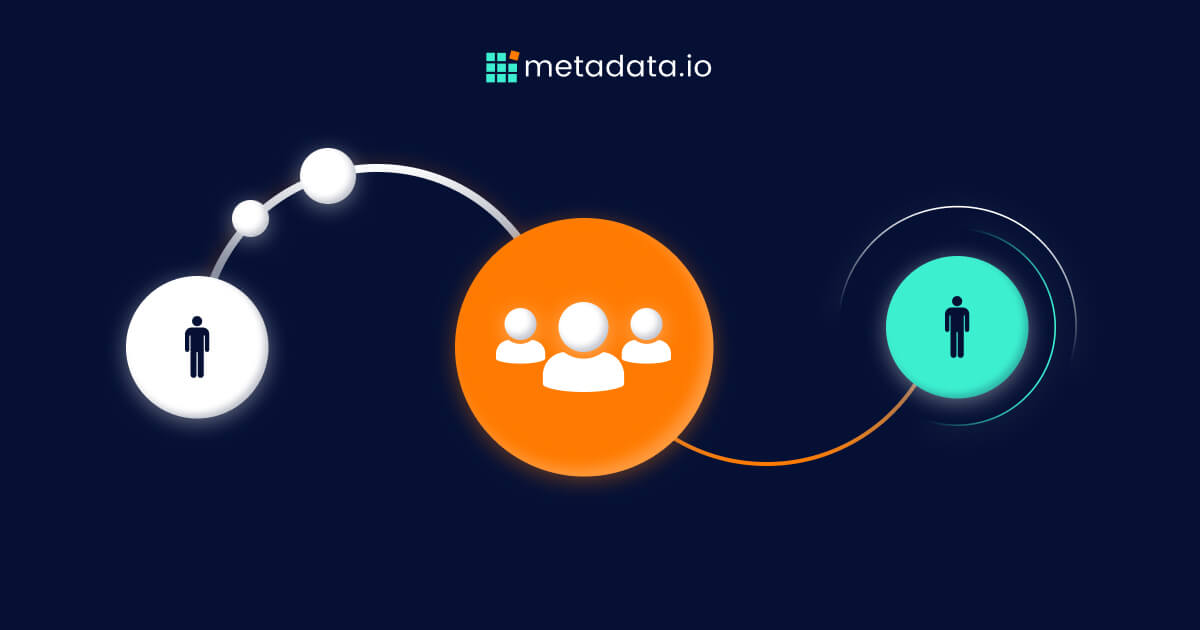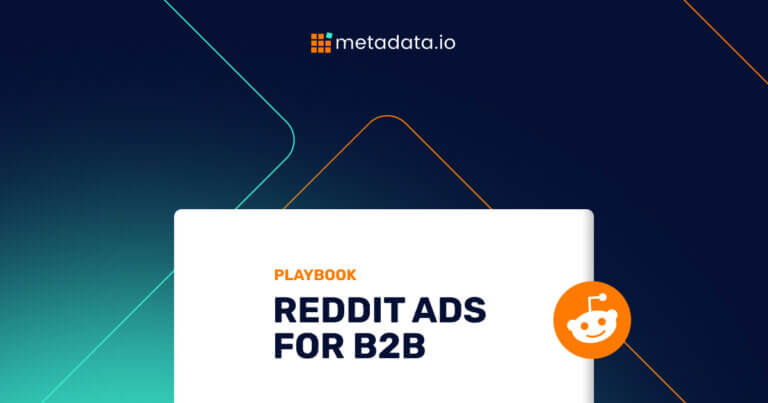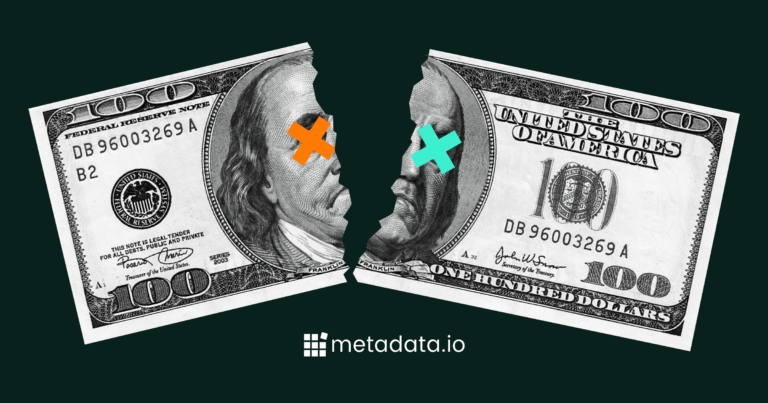The New Era of Retargeting: Best Practices for 2025 and Beyond

Table of Contents
Why have B2B marketers approached retargeting the same way B2C marketers have?
We’re not selling sneakers.
B2B deals don’t happen in one click. They happen across long buying cycles, involving multiple decision-makers, and a lengthier research process.
We’re selling software that reshapes teams, processes, and revenue.
Yet, most marketers still swarm prospects with the same tired playbook – endless retargeting ads, automated sequences, and follow-up calls. All in hopes of one more meeting. One more signature. One more five-digit TCV.
And sure, that used to work.
But that era is over.
Just like AI has rewritten SEO for the hundredth time this year, retargeting has entered its own revolution.
Marketers no longer have to rely on anonymous clicks or “spray-and-pray” remarketing lists.
Every visit, every scroll, every download is a decision. And those decisions are now more valuable and more actionable than ever before.
Your website isn’t just a destination anymore or a top-of-funnel indicator – it’s a diagnostic.
It shows you where pipeline is forming before it ever hits your CRM – unless you’re too late.
That’s where modern retargeting earns its keep.
Not by shouting, “Remember me?”
But by proving, “I remember you, and here’s what will actually help.”
The Past and the Present
Purchasing software used to look like
- Searching on Google “best _____ software”
- Visiting each website
- Cross-referencing with other research
- Creating a short list of solutions
- Visiting each company page again to do more research
- Taking demos
- Making some kind of matrix (because there’s always one)
- And linearly progressing down the funnel
Meanwhile, marketers retarget them based on simple engagement signals
- A company visiting the website in the last 30 days might be placed in a top-of-funnel audience
- An eBook form submission in a middle-of-funnel audience
- And an account with a demo request in a bottom-of-funnel audience
Then came AI.
The buyer’s journey is less linear than ever before, and marketers need to adapt their retargeting strategy to reflect that.
Your buyer’s first search doesn’t start on Google. It starts inside an LLM. ChatGPT, Claude, or another are now the first stop for research, shortlisting, and comparisons.
By the time a buyer lands on your website, they’re much further along than you think. That means a web visit isn’t a top-of-funnel signal anymore – it’s a buying signal.
Web visits are now more valuable than ever before. Treating it like early awareness is a mistake. Those accounts now belong at the bottom of your funnel, ready for targeted, conversion-driven engagement.
How Modern B2B Retargeting Works
AI has completely reshaped the way buyers research and evaluate vendors.
Today, every time-consuming and direct action is a more impactful signal than it was yesterday.
The key to modern retargeting is understanding what’s changed and acting on it with precision:
- Who to reach
- When to reach them
- What message to use
At a high level, that means:
- Rethink your buyer’s journey in the context of AI
- Stop relying on a single cookie trail
- Combine first-party data, CRM insights, and behavioral signals
- Activate these retargeting combinations to reach entire buying committees across LinkedIn, Meta, Reddit, and Google.
This is where channel strategy, segmentation, and personalization converge, and where your data and tools become a competitive advantage.

1. Use CRM and First-Party Data for Smarter Retargeting
Third-party cookies and generic intent signals are fading fast. Your own 1st-party data is your edge.
Integrate your CRM, MAP, and website analytics to build rich audience segments based on real interactions – not assumptions.
That means you can:
- Retarget existing leads with relevant content
- Re-engage open opps with timely updates
- Activate overlooked segments like event attendees or webinar registrants
Platforms like Metadata automate this syncing and optimize campaigns based on audience performance.
The result: smarter spend and stronger ROI.
2. Factor in Time-Based Retargeting
Not every lead is on the same timetable. By grouping audiences based on recency, you can tailor the message to their mindset.
- Recent (0–14 days): Offer demos or consultations while interest is fresh.
- Warm (30–90 days): Re-engage with helpful content or product updates.
- Cold (90+ days): Reintroduce your brand with thought leadership or case studies.
Respect pacing. Too frequent and you’ll annoy them. Too sparse and they’ll forget you.
3. Layer on Segmentation for Precision
Showing the same ad to everyone is a guaranteed way to waste budget. Segmentation turns retargeting into relevance. Speak directly to the pain points, behaviors, and buying stages of your audience.
Top of Funnel: Reserved for the earliest signals in the buyer’s journey
- Audience – Ad Clicks from the last 365 days
- Offer – Educational content that builds trust
Middle of Funnel: Layer in more notable behavioral data
- Audience – Industry-related webinar attendees over the last 180 days and newsletter subscribers
- Offer – Industry-specific research and success stories that reinforce results.
Bottom of Funnel: Focus on the most significant signals and behaviors
- Audience – Website Visitors over the last 14 days or Accounts on the pricing page from the last 30.
- Offer – Custom demos, limited-time offers, or content that speaks directly to procurement or ROI concerns.
When done right, segmentation turns retargeting from noise into a conversation.
4. Implement Account-Based Retargeting (ABR)
Account-based retargeting takes everything one level deeper. Instead of chasing individuals, you target entire companies.
Identify key accounts engaging with your emails, visiting your site, or engaging with your ads. Sync that data with your CRM and/or MAP to get a better understanding of their place in the buyer’s journey.
Metadata Insights makes this completely dynamic – turning website visits and other engagement points into a prioritized account list. Then, build a campaign that speaks to specific challenges often faced in their industry. Even a subtle nod to industry pain points can make an ad feel handcrafted.
5. Craft Personalized and Relevant Ads
Personalization is the difference between being remembered and being ignored.
If someone watched a recorded demo but didn’t convert, highlight a testimonial from a similar customer in their industry.
If they converted on an ROI Calculator, target them with ads focused on measurable outcomes.
AI-driven platforms like Metadata make personalization scalable and make every touch feel intentional, not automated.
6. Use Multi-Channel Retargeting to Stay Top of Mind
Would you invest your entire 401K into one stock? Then don’t bet your funnel on one ad platform.
Multi-channel retargeting:
- Reaches each member of the buying committee. For example, some may prefer scrolling on Instagram when off the clock.
- Provides more value to the prospect by tailoring your campaigns to each channel
- Expands your brand’s surface area to stay visible as buyers move across platforms.
- Keeps your visuals, tone, and value props consistent everywhere – building familiarity and trust.
The magic is in the coordination: one story, multiple touchpoints, correct buying stage.
The Big Picture: The Market’s Changed – Retargeting Strategy Hasn’t
The biggest mistake marketers make today? Running 2025 campaigns from a 2019 playbook.
Your buyers use AI and a plethora of channels every single day.
Your website visitors aren’t “top-of-funnel.” They’re in-market. They’re evaluating. They’re your best shot at accelerating the pipeline.With tools like Metadata Insights, you can finally see what your web traffic is trying to tell you -who’s looking, what they care about, and when they’re ready to act. Combine that with Metadata’s automated campaign orchestration, and you’re not just retargeting – you’re predicting.
Re-Engage, Convert, and Scale with Metadata
Retargeting is one of the most powerful levers in B2B marketing. When it’s done right.
Ready to turn your retargeting from reactive to revenue-driving?


